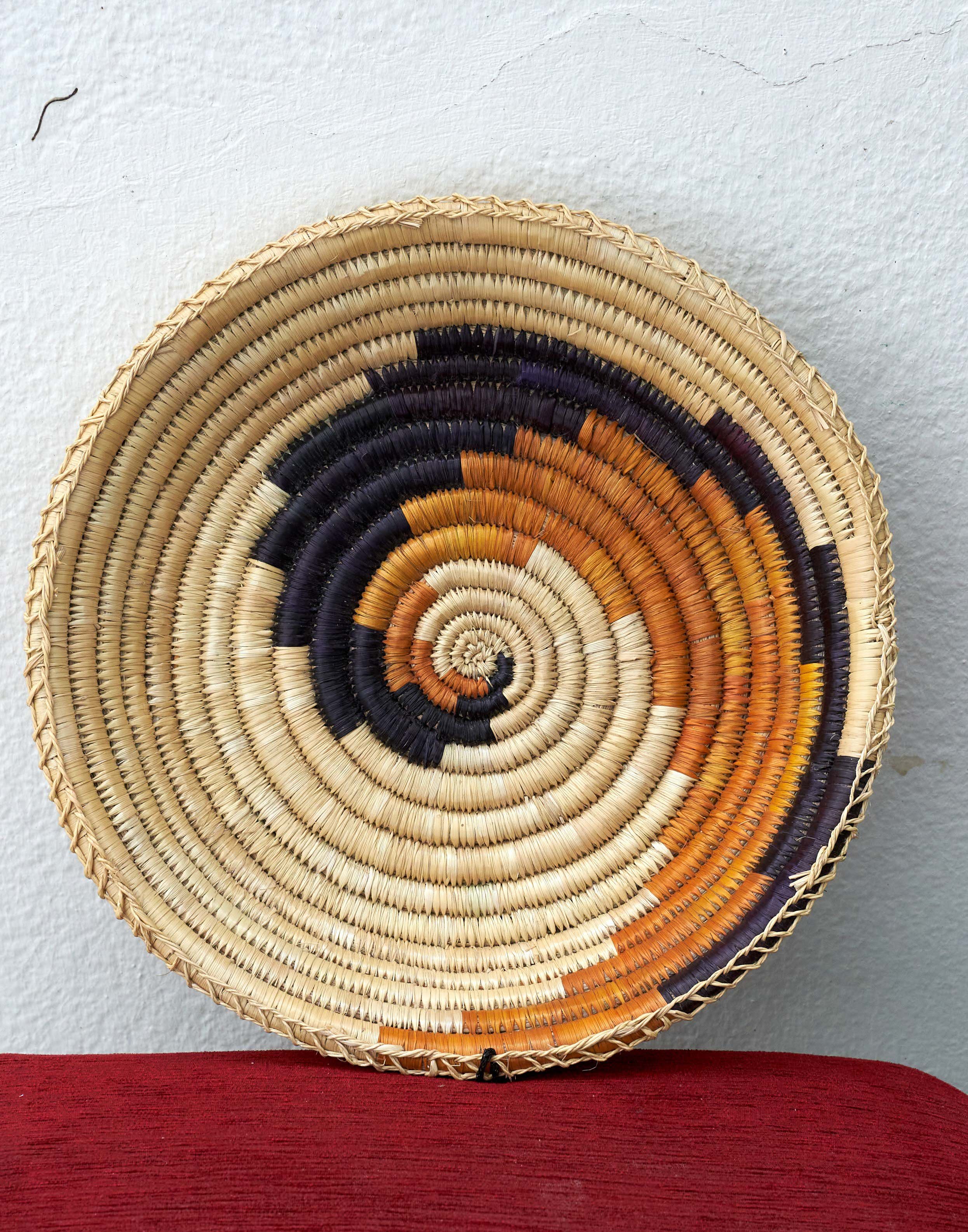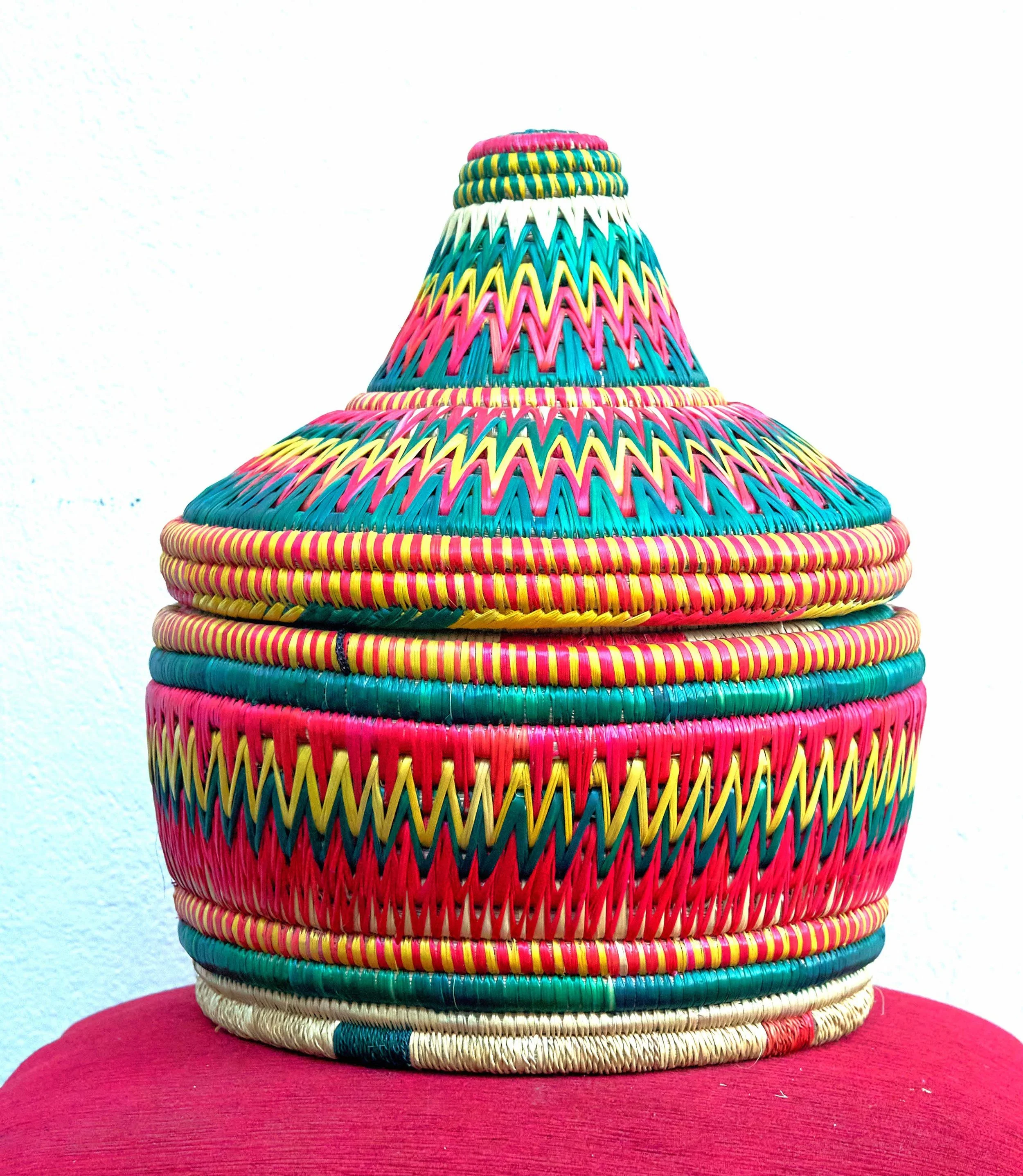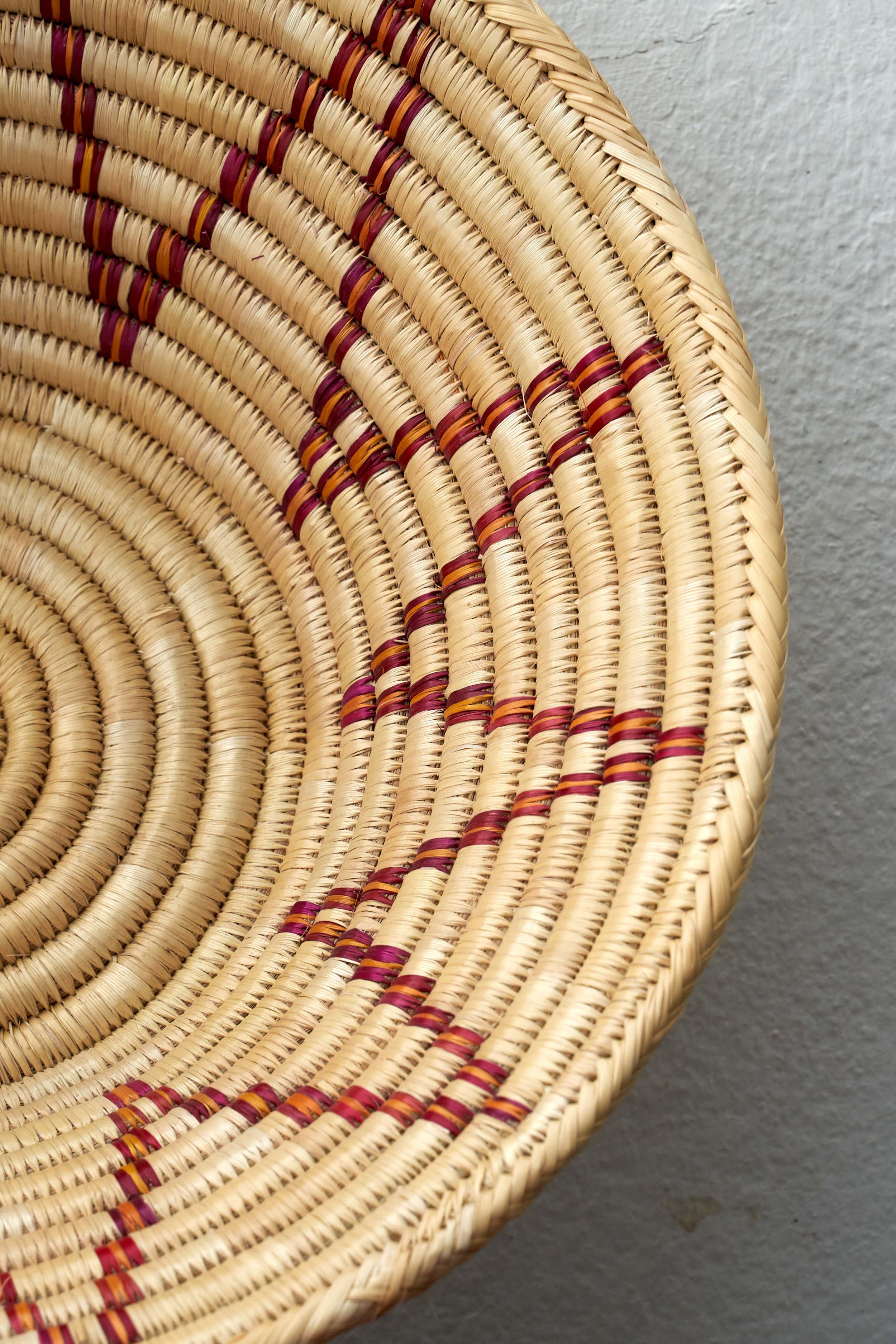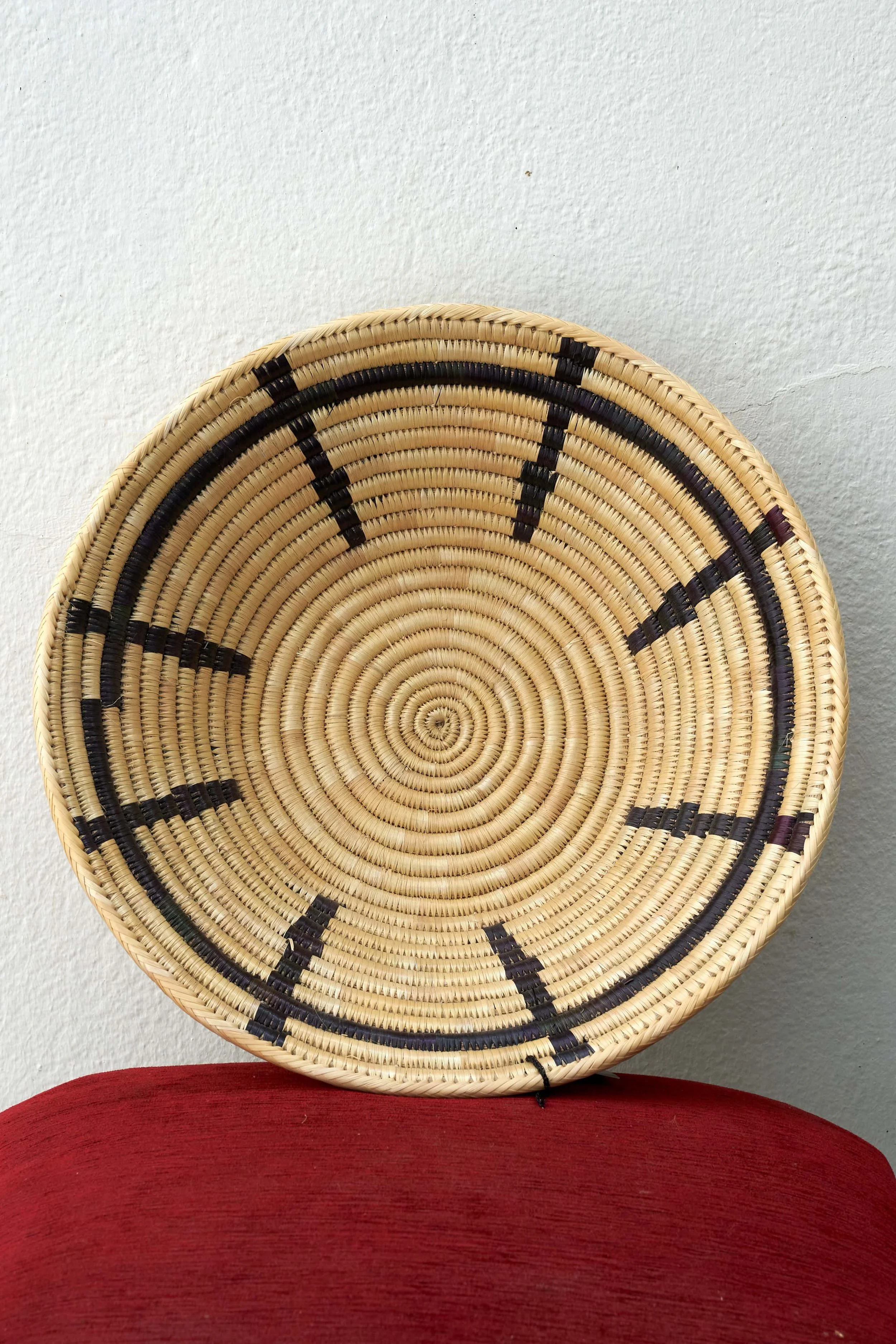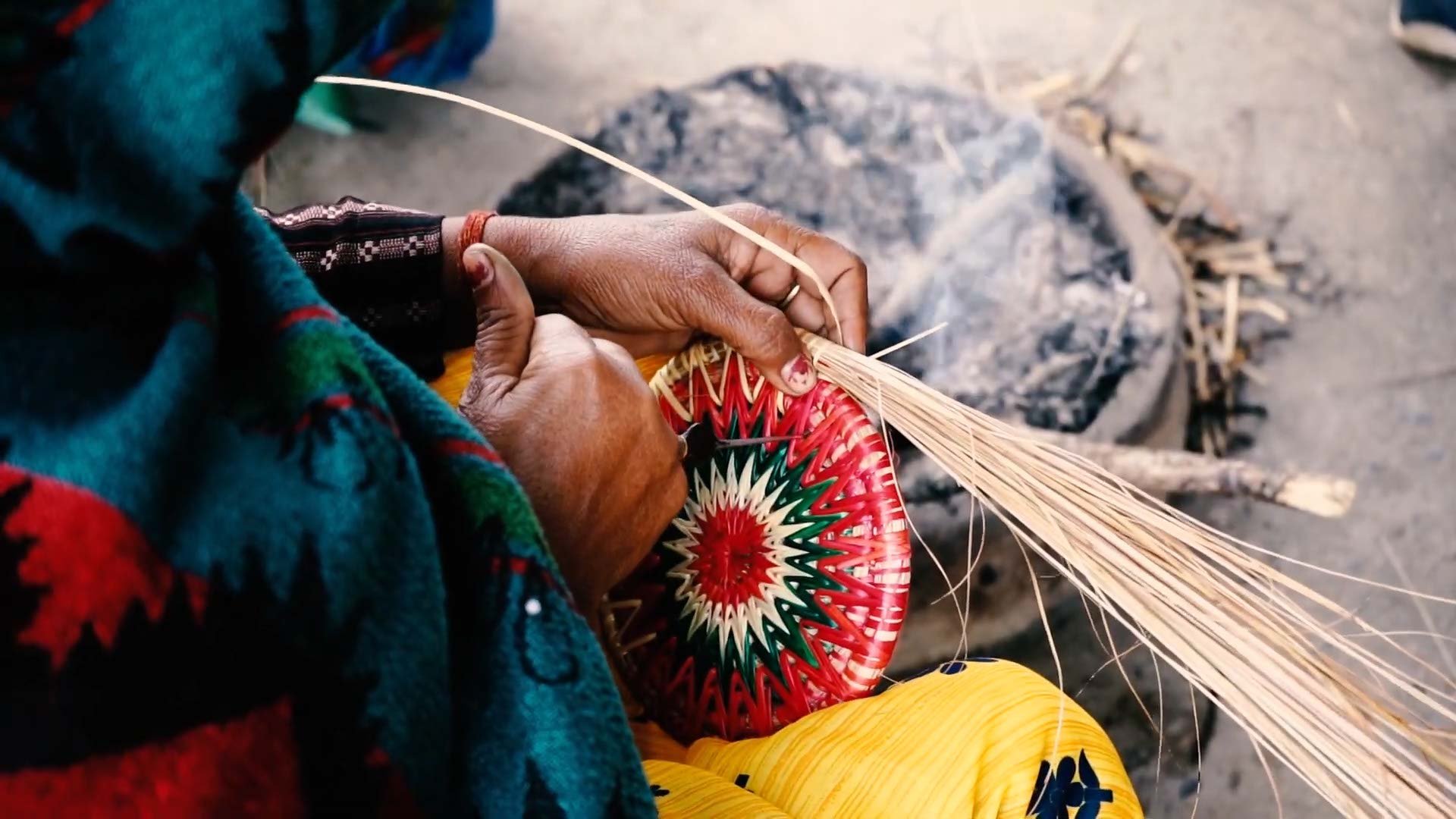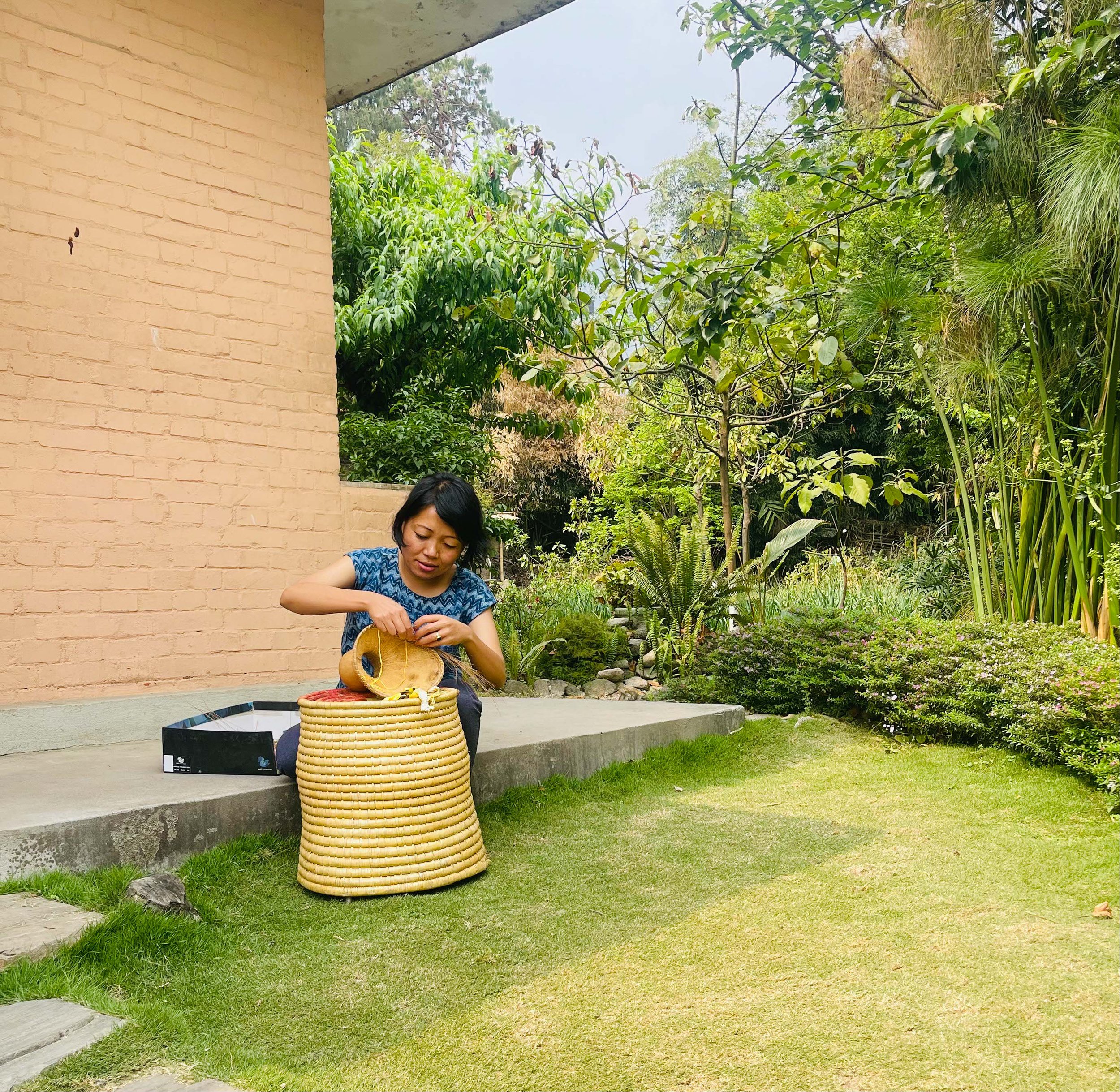Nepal Knotcraft
A Matrilineal Coil Wrapping Technique Lives On
In the low grasslands of Nepal, known as the Terai region, women artisans weave traditional deluwa, dhakiya, and feruwa baskets made up of sikki (elephant grass) and kans (soft grass). Nepal Knotcraft Art Collective works with over 50 women from the surrounding villages of Lumbini to revitalize sacred geometric patterns, traditional weaving techniques, and natural dyes. Dhakiya are utilitarian baskets used for transportation, feruwa are used for storage, and deluwa are ceremonial baskets traditionally given from mother to daughter as a bridal gift.
All baskets use one of two varieties of local grasses harvested in the nearby jungles. The grass on the outside of the basket is sikki, in order to be harvested “the women ask their husband or son to take them the distance by motorcycle. The men wait in the shade while the women spend a few hours in the hot sun cutting the razor-sharp grass using a traditional kutto blade.” After grass has been harvested it is transported back to the village where it is placed on rooftops to dry in the sun, the grass must be placed on the roof out of reach of hungry cows and goats. Once it is dried, the women remove the inner seed pod from each sikki stem and split it using a hand forged needle or takuwa. The stems are dyed before the women begin using traditional coil wrapping techniques to weave the basket. Nepal Knotcraft Art Collective exclusively uses the ancestral and ceremonial coil wrapping technique, not more modern techniques that are typically used for the tourist market as they are cheaper and faster.
While all coil wrapping techniques are passed from mother to daughter, it is perhaps the deluwa basket that holds the most meaning. The deluwa is an oversized, pyramid-shaped, lidded basket that is intended to be carried on the head. Mothers weave these baskets for their daughters and fill them with sewing needles, cooking utensils, and household items that any new bride needs. The exchange of this basket is a right of passage.
In addition to the technical aspects, Nepal Knotcraft Art’s baskets are adorned with beautiful and ancient patterns such as the pinwheel and pyramid. “We are reimagining traditional design and patterns to tell the ancestral stories of the Greater Lumbini Area. This sacred geography has been visited by the Hindu Gods and Goddesses Ram, Sita, Brahma and Indra and witnessed the birth of three Buddhas including the Buddha Shakyamuni, Siddartha Guatam.” Nepal Knotcraft Art also shares that knowledge of natural dyeing has been lost in the region, due to the foreign introduction of brighter and cheaper synthetic dyes. The collective continues to experiment with locally sourced natural dyes and hopes to revive the tradition in the future. “Not even our master weavers can recall how to produce natural and organic dyes the way their mothers did. The loss of basketmaking is an indication of a loss of shared ideas, beliefs and values, in other words a loss of culture.” Nepal Knotcraft Art Collective is actively working to find markets and create the demand for these culturally invaluable baskets.



